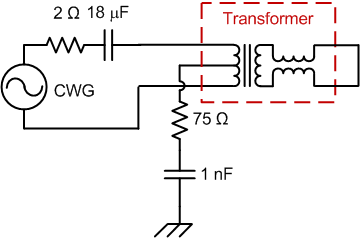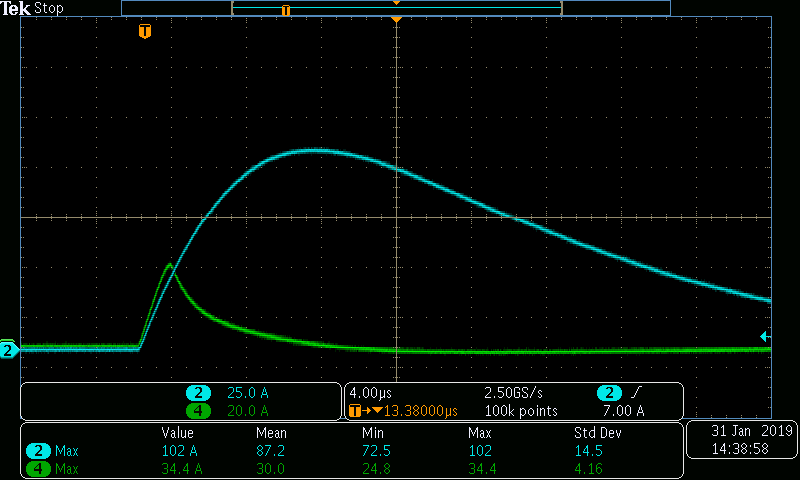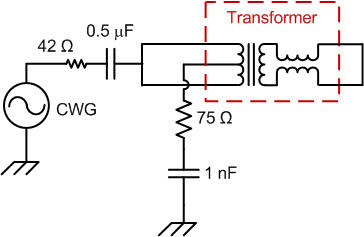SLVAE50A February 2019 – April 2022 ESDS302 , ESDS312 , ESDS314
3 Surge Pulse On Transformer
Therefore the question that comes up is how necessary it is to have surge protection on the side of the transformer that is not exposed to the harsh environment? There are two types of surge pulses that can happen to the lines: differential and common mode surge. The common mode surge happens when a high energy pulse capacitively couples onto all of the lines equally raising the common mode voltage. This can happen during lightning strikes or other events but interestingly enough, the transformer can easily dissipate this energy to the earth ground. This also means that the RC filter put on the center tap of the transformer plays a role in protection. Looking at the isolated side of the transformer, it can be seen that not much of the pulse gets through which means that the phy is protected until the transformer itself fails.
 Figure 3-1 Differential Surge
Figure 3-1 Differential Surge Figure 3-3 Differential Surge
Waveform on Transformer
Figure 3-3 Differential Surge
Waveform on Transformer Figure 3-2 Common Mode Surge
Figure 3-2 Common Mode SurgeHowever, differential surge is quite different. Differential surge is when the surge pulse is coupled directly on the signal line and returns on the other signal line. This type of surge pulse is very dangerous for Ethernet controllers because a portion of the surge pulse actually goes through the parasitic capacitance of the transformer and causes a current spike. This pulse can be seen in Figure 3-3. It is important to note that the reason there is no voltage on the secondary side of the transformer is because it is shorted together.